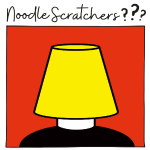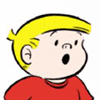White to Play
Published in Chess Puzzles

One of the questions you might ask yourself if you’re a novice at chess, is what is the purpose of doing these problems? The simple answer is that certain patterns keep popping up on the chess board, so you should learn the patterns!
I got an instant reminder of this with our last problem (take a look in the archives).Yesterday, I was playing on the ICC (Internet Chess Club), and a 5-minute game started out this way: 1.e4 c5 2.Nf3 b6 3.Nc3 Bb7 4.Bc4 e6 5.0–0 a6 6.a4 Qc7 7.Re1 Nf6 8.e5 Nd5 9.Bxd5 exd5 10.d4 c4 11.Nh4 g6 12.Bg5 Bg7 13.Qg4 0–0 14.Bf6 Bxf6 15.exf6 Kh8 16.Qg5 Qd6 and we arrived at the diagram. What did I do?
Solution:
Remember when we pointed out that a pawn on the sixth rank by a castled position can be troublesome? We would like to play 17.Qh6 and 18.Qg7 mate, but then the pawn would fall and there would be no mate. So, we use the vulnerable back rank to our advantage. 17.Nf5 Qc6 18.Qh6 Rg8 19.Qg7+ Rxg7 20.fxg7+ Kg8 21.Re8#
Other moves just put off the inevitable: 17…Qe6 18.Rxe6 Nc6 [18...dxe6 19.Qh6 Rg8 20.Nd6] 19.Re3 Rg8 20.Rh3 Rge8 21.Qh6 and mates. Also note that when a castled position has a g-pawn moved forward one space, it creates “homesteading” possibilities for the other player’s pieces.
Send questions and comments to PTamburro@aol.com.







Comments